In the Diocese of Manchester: The Signature of Fraud
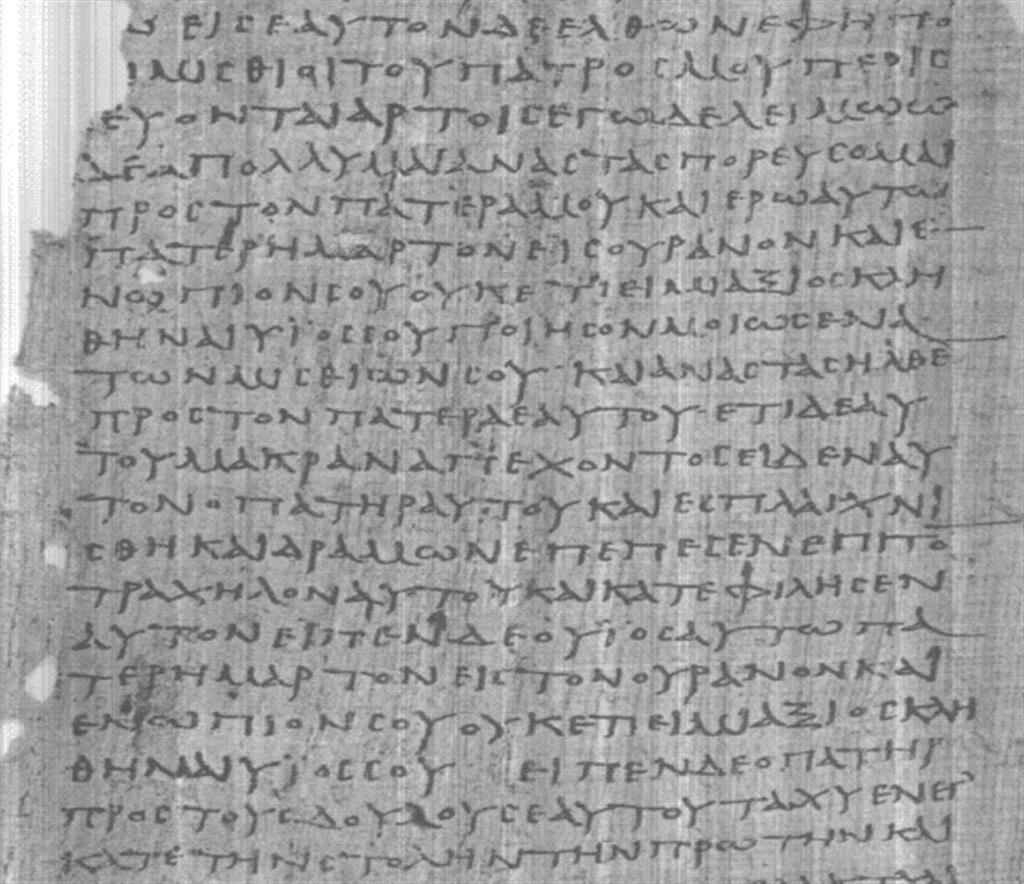 Finding fraudulently reproduced signatures of a bishop that were used to smash down a priest at the epicenter of an attempt to stop The Abuse Crisis is an attempt to stop The Judas Crisis.
Finding fraudulently reproduced signatures of a bishop that were used to smash down a priest at the epicenter of an attempt to stop The Abuse Crisis is an attempt to stop The Judas Crisis.
- After reading Ryan A MacDonald’s post last week, “In the Diocese of Manchester, Transparency and a Hit List”, Father George David Byers, SSL, STD, recalled some research he had done in early June of 2013 on signatures issuing from the Central Administration of the Diocese of Manchester, NH. His discoveries of fraud support the case of Father Gordon MacRae. It also seems to be in support of Ryan MacDonald’s post. Father Byers agreed to republish his findings below.
DISCLAIMER: NO EXPERTS NEEDEDEsoteric personality appraisals gleaned from anyone's handwriting are to be rejected. When I was only five years old, I learned how to replicate quickly, with ease and exactitude the handwriting of all of my family members, an on-demand talent I retained for some fifteen years. I do not share any of their personality traits. It doesn't take an expert to say that we can place such unscientific efforts aside.Quantico, Virginia is home to high powered criminal investigative training facilities, viz., the FBI Academy, NCIS, ACIC, AFOSI. All very scientific. But any expertise I claim in individuating one person's writing over against another, particularly if there is a question of fraud, does not stem from any extra-credit course taken on the banks of the Potomac. I have none of the authority that a secular court of justice would demand. But the signature of fraud is so obvious in the case of the Central Administration of the Diocese of Manchester that it seems to be painfully pedantic just to present the facts. So, let's place any uselessly over-scientific explication aside.It was during many years of analysis of biblical papyri and codices of the early centuries that I took note of traces of interloper copyists of various centuries with their anachronistic styles of writing. That talent was particularly difficult to come by, and many experts in the field of paleography put on airs of gnostic superiority. However, the only helpful ability this had me bring to the signatures issuing from the Central Administration of the Diocese of Manchester, NH amounts to a predisposition to hold that there's not much which actually is what it seems to be. It's true that all ecclesiastics look for signatures on any letter - it's the first thing one does - but anyone can have a healthy dose of situational awareness. So let's put aside all claims that special talents are needed to discern a signature of fraud, with however much care - or not - any such signature happened to be rendered. You are invited to make the judgment. Many have, both here in these USA and across the pond. SOME EXAMPLES OF THE SIGNATURES OF FRAUDThis signature is from April 26, 2004. Note all five examples of the letter “o” in the note, and the two examples of the same letter “o” in the signature:
SOME EXAMPLES OF THE SIGNATURES OF FRAUDThis signature is from April 26, 2004. Note all five examples of the letter “o” in the note, and the two examples of the same letter “o” in the signature: Below is an example from May 21, 2004. Something seems terribly wrong with the following signature compared to the one above. Compare the letter “o” of John in the images above and below. Even worse, compare the last two letters of the image below with the one above. The signature below, especially at the end, seems terribly agonized. Also - and this is one of those "not possible to change" aspects of writing - compare the convex connectors on the cross before the initial and before the name above with the concave connector of the cross before the name below. Note the convex lead into the letter "h" of John above and the concave of the same below, then scroll quickly through the rest taking note of that same "h" of John. Having done that, compare the concave nature of the connector to the cross, and then of the "h" of John and capital "C" of McCormack. They are all concave. This remains true with internal consistency with each signature whether those items are convex or concave in the various examples. This is something quite impossible to change in one's writing style.
Below is an example from May 21, 2004. Something seems terribly wrong with the following signature compared to the one above. Compare the letter “o” of John in the images above and below. Even worse, compare the last two letters of the image below with the one above. The signature below, especially at the end, seems terribly agonized. Also - and this is one of those "not possible to change" aspects of writing - compare the convex connectors on the cross before the initial and before the name above with the concave connector of the cross before the name below. Note the convex lead into the letter "h" of John above and the concave of the same below, then scroll quickly through the rest taking note of that same "h" of John. Having done that, compare the concave nature of the connector to the cross, and then of the "h" of John and capital "C" of McCormack. They are all concave. This remains true with internal consistency with each signature whether those items are convex or concave in the various examples. This is something quite impossible to change in one's writing style.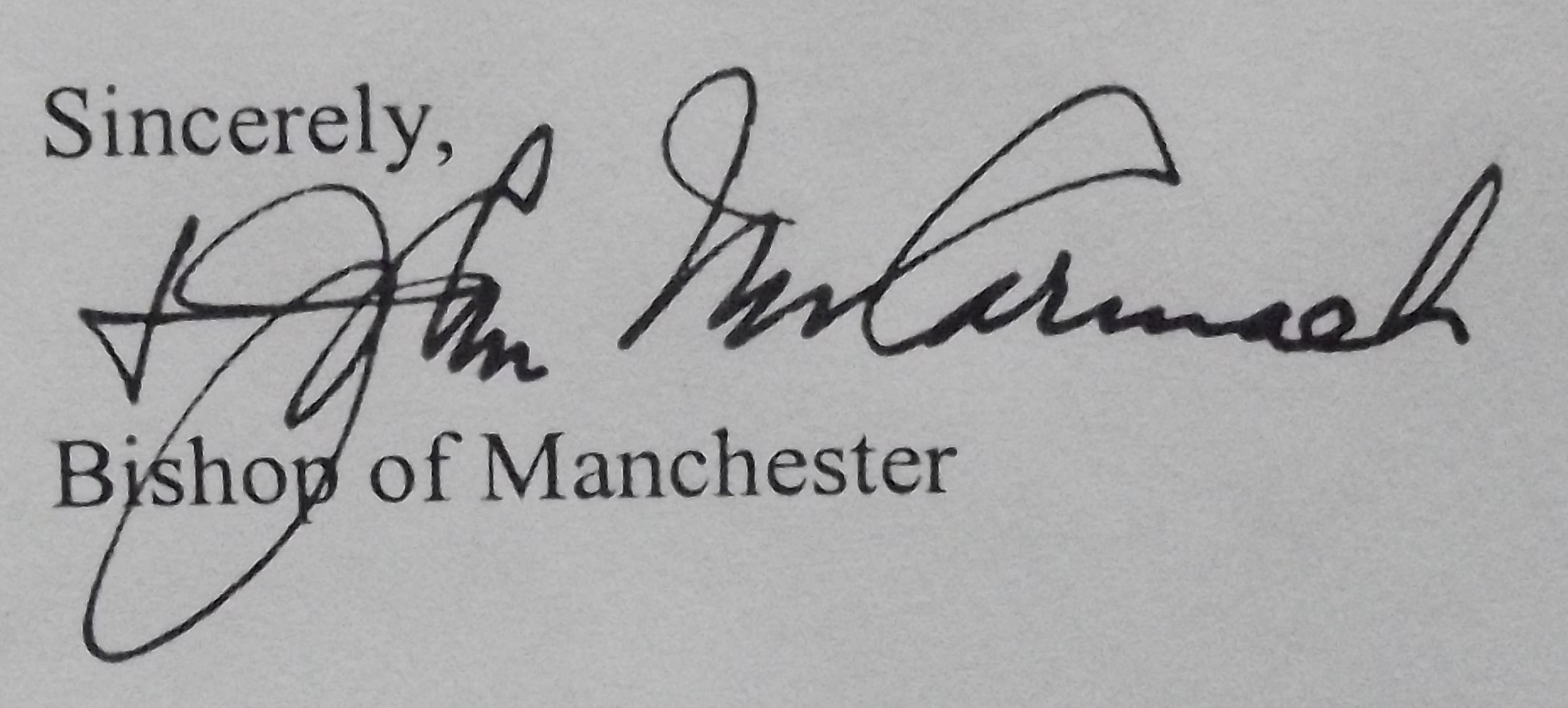 Below is a signature from February 22, 2005. This particular letter promises an impending visit regarding an urgent matter for the Congregation for the Doctrine of the Faith, where cases of dismissal from the clerical state ("laicization") are prepared. Look at the “o” of John, and the markedly different convex connector for the cross before the name. So many things. When that visit did come about and Father Gordon asked Bishop John McCormack about this very letter, the Bishop allegedly denied any knowledge at all about the letter.
Below is a signature from February 22, 2005. This particular letter promises an impending visit regarding an urgent matter for the Congregation for the Doctrine of the Faith, where cases of dismissal from the clerical state ("laicization") are prepared. Look at the “o” of John, and the markedly different convex connector for the cross before the name. So many things. When that visit did come about and Father Gordon asked Bishop John McCormack about this very letter, the Bishop allegedly denied any knowledge at all about the letter. Let’s move on to a signature, below, of May 5, 2005. Look at the “o” in John again, and how the “M” begins in the last name. Look at the “h” of John. The “J” is extraordinarily wobbly when it starts off horizontally, indicated a very slow movement of the pen. The connector of the cross is not the rushed convex effort above, or an equally rushed convex but quickly wrought artifact one would get when not paying attention while rendering the fraud, but rather a kind of drunken deliberate cornering that is artificial, forced. Making a slow and deliberate, forced connector to the cross is not something that one would do as it is much more laborious than lifting the pen so as to render vertical and horizontal beams to the cross.
Let’s move on to a signature, below, of May 5, 2005. Look at the “o” in John again, and how the “M” begins in the last name. Look at the “h” of John. The “J” is extraordinarily wobbly when it starts off horizontally, indicated a very slow movement of the pen. The connector of the cross is not the rushed convex effort above, or an equally rushed convex but quickly wrought artifact one would get when not paying attention while rendering the fraud, but rather a kind of drunken deliberate cornering that is artificial, forced. Making a slow and deliberate, forced connector to the cross is not something that one would do as it is much more laborious than lifting the pen so as to render vertical and horizontal beams to the cross.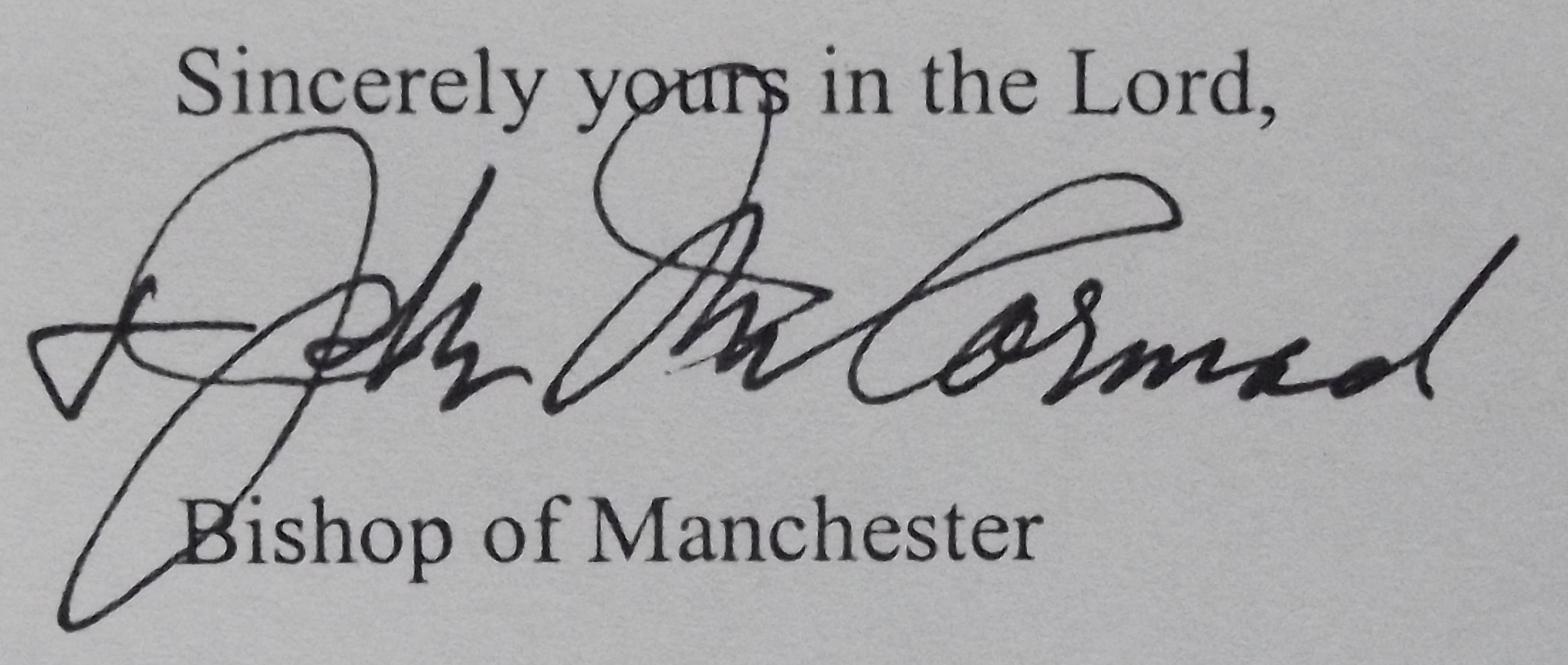 But let’s move on to the signature below from April 11, 2007. Just “John”, this time with a very fluid convex cross before the name. Now, if a person always signs with a full first and last name, does this first-name-only usage here call into question the signature? Does such a change in practice carry deniability? This is, as I find out, an extremely technical question. The letter in question makes a declaration of intent in regard to actions concerning the Attorney General’s office. Would such a signature, if not forged, constitute the letter as evidence in court?
But let’s move on to the signature below from April 11, 2007. Just “John”, this time with a very fluid convex cross before the name. Now, if a person always signs with a full first and last name, does this first-name-only usage here call into question the signature? Does such a change in practice carry deniability? This is, as I find out, an extremely technical question. The letter in question makes a declaration of intent in regard to actions concerning the Attorney General’s office. Would such a signature, if not forged, constitute the letter as evidence in court?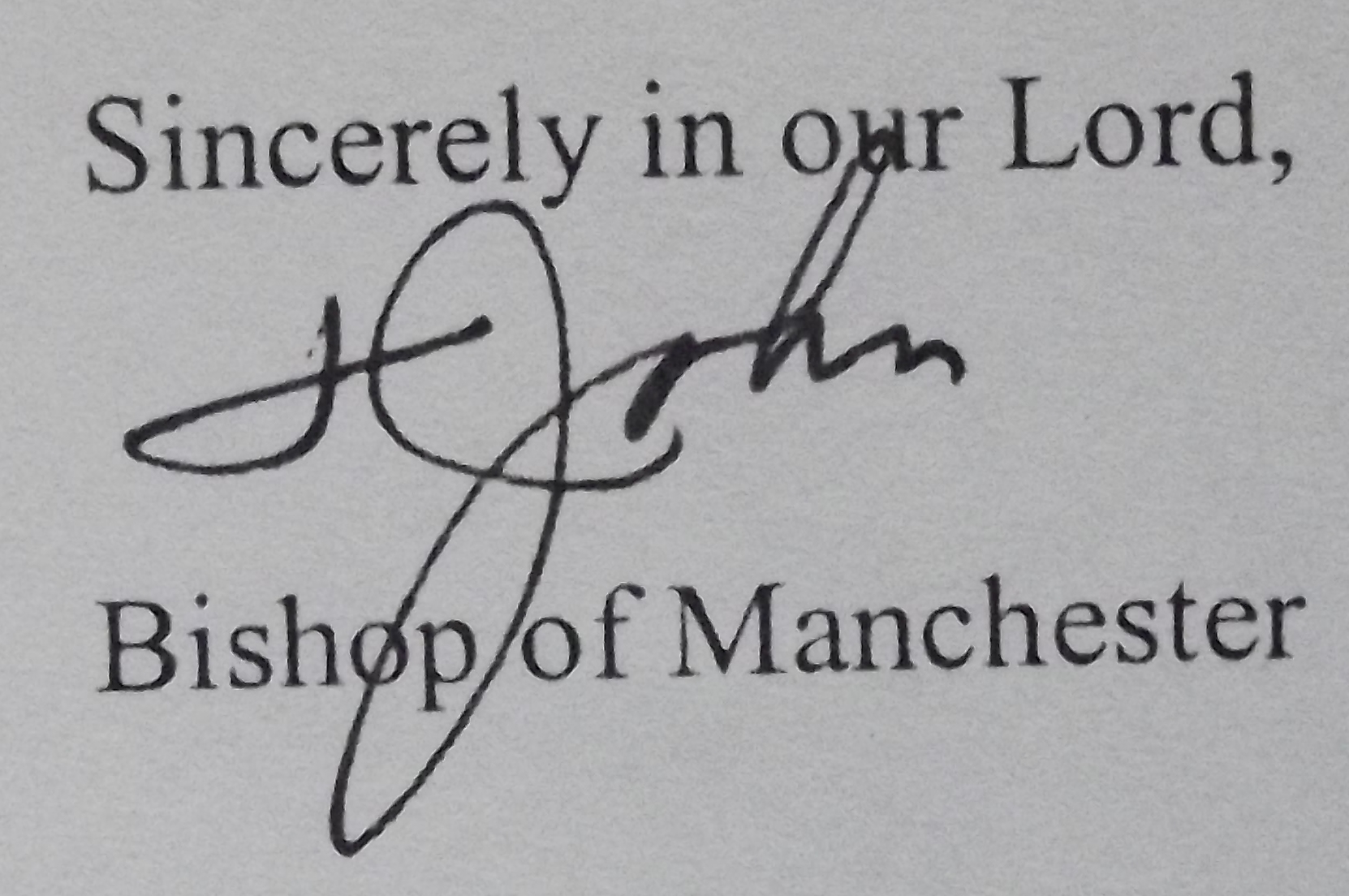 The signature below is from December 5, 2007. Note, again, the “o” in John and how it connects with the "h" in John by way of a pointed corner. Compare that to the same in the signature just above, and the same above that all the way to the top. Pfft. The “M” of McCormack is impossibly unique compared to the other signatures. Also, notice the cross “+” before the signature. It is, for the first time, “+” instead of two bars being connected on the lower-left side by a connector that is either concave or convex. Also, “mack” of McCormack seems especially labored. Whoever signed it would be under pressure, as in this letter the Bishop is stating that the Diocese is retaining an attorney for themselves.
The signature below is from December 5, 2007. Note, again, the “o” in John and how it connects with the "h" in John by way of a pointed corner. Compare that to the same in the signature just above, and the same above that all the way to the top. Pfft. The “M” of McCormack is impossibly unique compared to the other signatures. Also, notice the cross “+” before the signature. It is, for the first time, “+” instead of two bars being connected on the lower-left side by a connector that is either concave or convex. Also, “mack” of McCormack seems especially labored. Whoever signed it would be under pressure, as in this letter the Bishop is stating that the Diocese is retaining an attorney for themselves.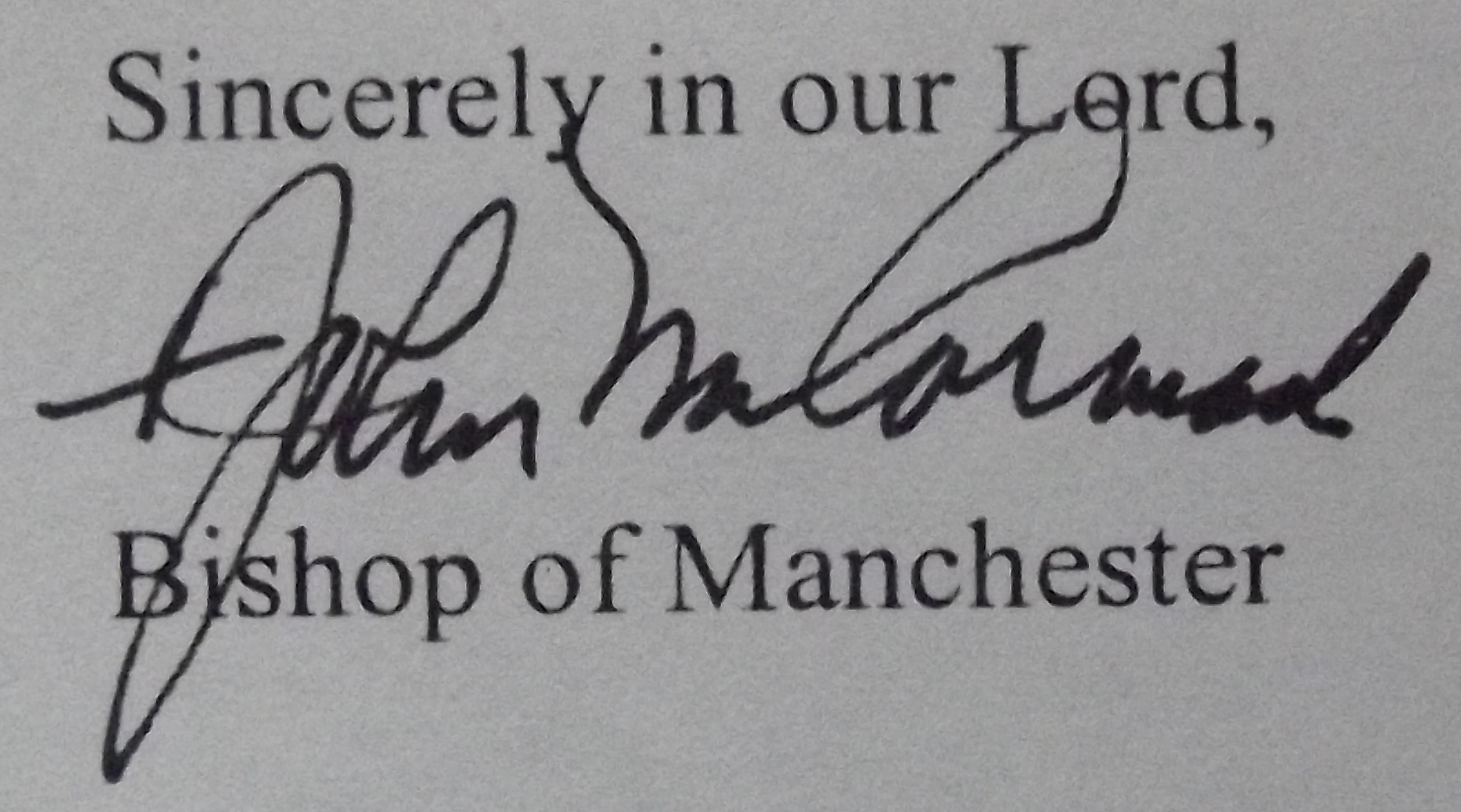 Now let's take a look at the last signature of Bishop John McCormack below, of January 31, 2008, note that we have, again, only the first name. Compare the “o” with the previous two signatures above. Clearly the "o" is made with a swirling motion when this is always the case as evidenced above, where the "o" is made as a kind of closed "u". Also, note the entirely anomalous ending of the letter “n” of John. Note the “+” again, with no connector at all. The content of this letter was full of exasperation, just wanting to get the case off his desk. Imagine Father MacRae, whose thirst for justice is reduced to the exasperation of a bishop's frustrated convenience.
Now let's take a look at the last signature of Bishop John McCormack below, of January 31, 2008, note that we have, again, only the first name. Compare the “o” with the previous two signatures above. Clearly the "o" is made with a swirling motion when this is always the case as evidenced above, where the "o" is made as a kind of closed "u". Also, note the entirely anomalous ending of the letter “n” of John. Note the “+” again, with no connector at all. The content of this letter was full of exasperation, just wanting to get the case off his desk. Imagine Father MacRae, whose thirst for justice is reduced to the exasperation of a bishop's frustrated convenience.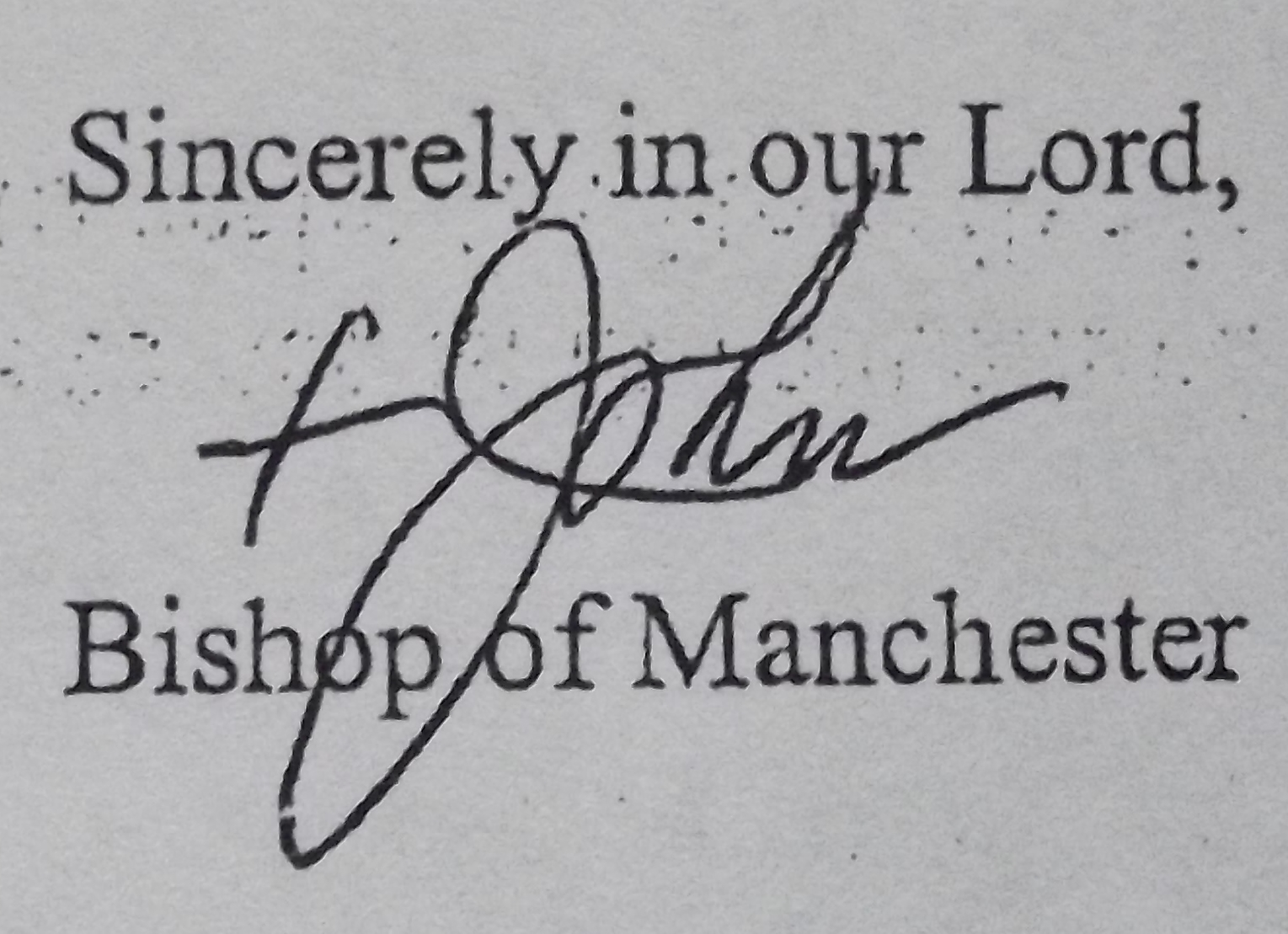 TAKING A STEP BACK FOR PERSPECTIVEIt may be a legitimate exercise in office-flow-expediency for a bishop to have employees sign letters for him much the same way that he might instruct that Christmas cards go out to many thousands of people, all with bubble-jet printed signatures. It's bad taste, but not forgery, not fraud. There is no intent to mislead about the willingness to sign Christmas cards. That argument, however, flies out the window regarding communications in which someone's life is hanging in the balance. Slitting someone's throat is not a Christmas card.In this case, when the existence of letters is denied by the bishop who is looking at the very letters with "his" signature on them, it begs the question as to who signed such letters, and, for that matter, why the bishop couldn't have cared less. One has to wonder if the Bishop has distanced himself so far from anything to do with such cases that he had delegated others both to write letters and sign them as if they themselves were the bishop, not even bothering to inform the real bishop.What if one or more of those letters went off to the Congregation for the Doctrine of the Faith asking for the dismissal from the clerical state against Father Gordon MacRae, a letter or letters which Bishop McCormack may say he never knew about? Would that not make such a signature criminally fraudulent in the eyes of the Church?
TAKING A STEP BACK FOR PERSPECTIVEIt may be a legitimate exercise in office-flow-expediency for a bishop to have employees sign letters for him much the same way that he might instruct that Christmas cards go out to many thousands of people, all with bubble-jet printed signatures. It's bad taste, but not forgery, not fraud. There is no intent to mislead about the willingness to sign Christmas cards. That argument, however, flies out the window regarding communications in which someone's life is hanging in the balance. Slitting someone's throat is not a Christmas card.In this case, when the existence of letters is denied by the bishop who is looking at the very letters with "his" signature on them, it begs the question as to who signed such letters, and, for that matter, why the bishop couldn't have cared less. One has to wonder if the Bishop has distanced himself so far from anything to do with such cases that he had delegated others both to write letters and sign them as if they themselves were the bishop, not even bothering to inform the real bishop.What if one or more of those letters went off to the Congregation for the Doctrine of the Faith asking for the dismissal from the clerical state against Father Gordon MacRae, a letter or letters which Bishop McCormack may say he never knew about? Would that not make such a signature criminally fraudulent in the eyes of the Church? CUT AND PASTE SIGNATURES OF FRAUDMaking up signatures of fraud for the bishop became a "thing." Committing forgery so as to be fraudulent can be so draining of oneself. So, instead of attempting to write it out all the time - which is such a hassle - why not just create a digital image of the signature, a conglomeration of other signatures, trying to make it look as authentic as possible, and yet, strikingly obviously “supplied” electronically. That way, there can be plausible deniability even before the Pope, who personally decides cases of dismissing a priest from the clerical state, depending, of course, on the statements of bishops.Long before I ever heard of Father Gordon MacRae, one of his supporters wrote to Pope Benedict XVI about a view of various statements seeming to have their provenance with Bishop John McCormack. That person received a response from Bishop John McCormack, well, purportedly from him. Let’s take a look at the obviously digitally supplied signature that was clearly made to look manufactured, just in case anyone was wondering. The letter came on the stationary of the Office of the Bishop, with the content of the letter and the digital image of the signature being printed from a computer. The signature is a conglomeration of other exemplars of signatures that are purportedly of the bishop.
CUT AND PASTE SIGNATURES OF FRAUDMaking up signatures of fraud for the bishop became a "thing." Committing forgery so as to be fraudulent can be so draining of oneself. So, instead of attempting to write it out all the time - which is such a hassle - why not just create a digital image of the signature, a conglomeration of other signatures, trying to make it look as authentic as possible, and yet, strikingly obviously “supplied” electronically. That way, there can be plausible deniability even before the Pope, who personally decides cases of dismissing a priest from the clerical state, depending, of course, on the statements of bishops.Long before I ever heard of Father Gordon MacRae, one of his supporters wrote to Pope Benedict XVI about a view of various statements seeming to have their provenance with Bishop John McCormack. That person received a response from Bishop John McCormack, well, purportedly from him. Let’s take a look at the obviously digitally supplied signature that was clearly made to look manufactured, just in case anyone was wondering. The letter came on the stationary of the Office of the Bishop, with the content of the letter and the digital image of the signature being printed from a computer. The signature is a conglomeration of other exemplars of signatures that are purportedly of the bishop. Let's point out some of the impossibilities, circled here in red:
Let's point out some of the impossibilities, circled here in red:
- Note how “Sincere” is lower on the page than “ly”, and is printed by a different printer, perhaps laser instead of a bubble-jet.
- Note how “Bi” of “Bishop is quite a bit lower and also rather dramatically cut off from the rest of the word. It looks to be printed by yet a third printer.
- Note how the tops of the letters “J” and “h” of John are cut off at exactly the same height, as if with a pair of scissors.
- Note how the bottom of the “J” of John is perfectly cut off, again, as with a pair of scissors.
- Note how the midpoint down on the right side of the letter “J” of John a chunk of the letter is missing, as if by a vertical and then horizontal cut with a scissors.
- Note how the bottoms of the letters “n” of John and the “M” and “C” of McCormack are all cut off at exactly the same horizontal depth as that bit missing from the “J” of John, again, as with a pair of scissors.
The point is that there was absolutely no effort made to make this look like a careful forgery. It was made to look pitiful on purpose. This gives deniability to the Bishop and has the benefit — in its conglomerate nature — of distancing anyone who might have otherwise signed letters for the Bishop previously, it being that this is entirely a cut and paste job that is digitally photographed and printed as one graphic pasted into the letter on the computer generating the content of the letter itself.This letter with such an odd signature of fraud stands as evidence against what has been wrought against Father MacRae. This particular letter has grave effects for a number of other people. There are affidavits and policies to be examined relative to this last letter. Is the conglomerate signature an attempt of the Judas priest responsible for all this to escape from being accused of committing fraud?Perhaps one day priests will start to enjoy the right to due process, the right to the mercy of justice. All we've had up to this point is proclaiming that any accusation is proof of guilt. But that invites kickbacks from national Catholic risk retention groups of whatever kind. And that has the signature of fraud written all over it.P.S. The graphic at the top of this post is a picture I took of the Bodmer Papyrus - 𝔓75 - at the section of the Gospel of Luke which presents the Parable of the Prodigal Son returning from his living a life without salvation. This post is not intended to be a "gotcha" post, but rather stands as an invitation for those responsible to set things right.
+ + +
Editor's Note: Father George David Byers in far-Western North Carolina, is pastor of Holy Redeemer church in Cherokee County, Prince of Peace church in Graham County, with the parish boundaries spilling over into Macon County. He's a Missionary of Mercy and long time friend of Father MacRae. Among the posts he has written for These Stone Walls, Father MacRae has a favorite which you may wish to review: Father Gordon MacRae & Pornchai Moontri: Captives of Irony Incarnate.We are attempting to rebuild our subscriber list which is now being sent out through Mail Chimp, not by gmail. If you haven't yet subscribed very recently, we've made it very easy. Just visit the Subscribe Page, or begin by using the form at the bottom of most posts.One of our readers has set up a magnificent secondary Facebook Page for These Stone Walls. Posts are thematically grouped together. Very nice altogether.Finally, see the documentary interview with Father MacRae, which has been put up on a dedicated YouTube Channel by The Friday Esquire.